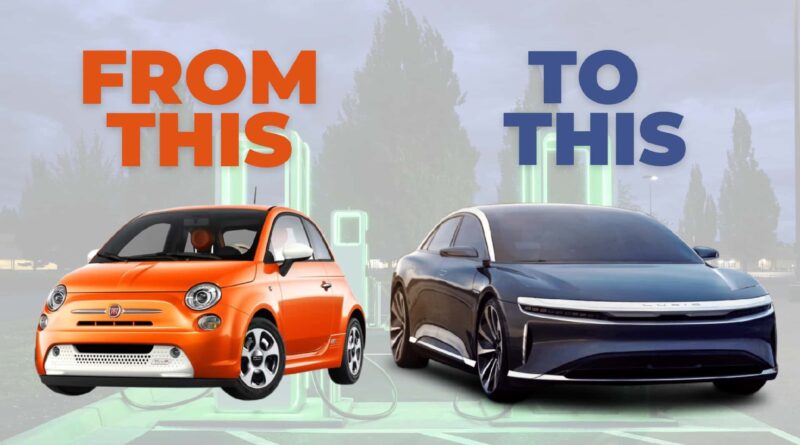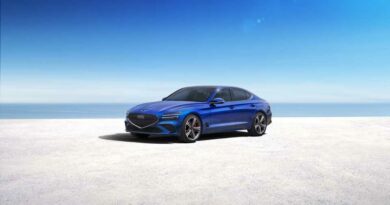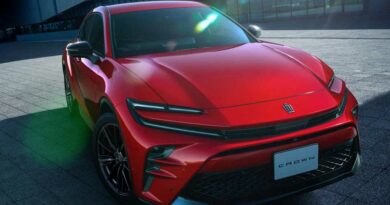The Electric Vehicle Class of 2019 Shows How Far We’ve Come
Given the way Tesla alone has dominated so many headlines in recent years, it almost feels like electric vehicles have been an integral part of the industry for a long time. The truth is that modern EVs are still largely in their infancy. But this technology is moving incredibly fast. Just look at what was available a mere four years ago compared to now.
I call it “The Class of ‘19.” Back then, only 16 battery-electric vehicles were available for purchase in the U.S. market. Three were Teslas and the other 13 were from various legacy brands, including the Nissan Leaf, Volkswagen e-Golf, Fiat 500e, plus a few that have even managed to stick around today, like the Chevrolet Bolt and Jaguar I-Pace. But most of them were far different from today’s EVs. And this suggests a rate of change that, if anything, will accelerate through at least the end of this decade.
To put things in context, it should be mentioned that battery-electric vehicles are both an extremely young technology and one of the oldest technologies in the industry. As the budding auto industry transitioned from the 19th century into the 20th, the market had not decided whether internal combustion engines would win the battle over the electric vehicles that were so prominent as the industry began. Ironically, the electric-powered self-starter turned the tide in favor of internal combustion engines, a tide that has yet to ebb.
Despite General Motors’ attempt to shake things up with the mid-1990s GM EV1, no battery-electric vehicle raised its head as a viable consumer product until nascent Tesla (née Tesla Motors) had the temerity to market the Tesla Roadster in 2008. Soon after, Nissan got into the fray with the Leaf hatchback.
Compliance Car 101
The Leaf, rather than the Tesla Roadster, set the pattern for EV 1.0. Automakers took the cheapest cars they had, typically subcompact hatchbacks, and swapped out their engines for expensive battery-electric powertrains. Most were adapted from ICE platforms; even the Leaf, innovative as it was, had an architecture derived from one used on cars like the Nissan Cube.
Among the 1.0 crowd were the Ford Focus EV, Volkswagen e-Golf, and Kia Soul EV. For these EVs, carmakers adopted a “commuter philosophy.” Take the most affordable battery and stuff it into the cheapest car to keep the price down. They’re not going to go very far, so they’ve got to be cheap. They were appealing as a second or third car that saved you money at the pump.
But, of course, they weren’t that cheap in the context of the overall market because ICE versions of those cars, which did not require expensive battery packs, were (and are) less expensive to manufacture. The e-Golf, for example, started at $32,790, over $10,000 above the base Golf that year. Range wasn’t amazing back then, either; the average driving distance of the non-Tesla cars we looked at back then was about 165 miles, with a high of 258 miles with the Kona EV down to 84 miles with the 500e.
The EV Class of ’19 was filled with vehicles like that. So, four years later, how has EV 1.0 worked out? By the numbers, not all that well. Of those 13 non-Tesla EVs in the market in 2019, only a handful of models remain in the market today. Kia Niro EV and Hyundai Kona EV have entered a new and improved generation, but the exact futures of the Leaf, Bolt and I-Pace seem unclear. On the other hand, all three Tesla models available in 2019 are still on the market today. (More on those in a bit.)
So how were the Teslas able to survive when the first EVs from established manufacturers have largely vanished?
Tesla turned the industry on its ear with the Roadster, but even more with the 2012 debut of the Tesla Model S. The latter introduction was the beginning of EV 2.0. Instead of creating electric vehicles to comply with regulations, Tesla postulated an electric vehicle could be a tech product that is fast, sexy and fun – a completely different mindset. It’s a top-down approach, playing up to the strongest attributes of EVs rather than making an attempt to hide them.
The approach continues to work well for Tesla, accounting for the continued success of its three models among the EV Class of ’19. It also spawned EV 2.0 competitors, including the Ford Mustang Mach-E and the GMC Hummer EV SUT. Following in the footsteps of upstart Tesla, established automakers chose some of their best-recognized names for their EV 2.0 round of vehicles.
The Ford Mustang Mach-E conjures smoking tires, burnouts, and high performance. It’s an SUV, because that is the most popular vehicle type, but it has the Mustang name and all the brand attributes associated with it. Among those qualities are fun, speed and tech—very different than EV 1.0.
While this might seem very familiar, as recently as the start of the pandemic, none of this was true. In 2019, the electric vehicle segment consisted of cheap EVs and Teslas. `
How the Teslas Beat the Odds
Aging vehicles like the Tesla Model S, Model X and Model 3 – three Class of ’19 survivors – have withstood the onslaught of newer EVs not only because of their intrinsic attributes but also because Tesla’s management was prescient enough to understand that marketing EVs required more than simply good products. It also required building a charging infrastructure, the famed Tesla Supercharger network, to support those vehicles.
The reliability and ubiquity of the Tesla Superchargers has been so consistently strong that when considering an EV, many consumers only think of Tesla. The charging network enables Tesla owners to drive across the country without concerns about charging. At the same time, the rest of the automakers rely on a third-party system to create the infrastructure charging network which has not worked out very well for most consumers. In fact, the vast majority of manufacturers have now announced plans to adopt Tesla’s charging standard and protocol, the North American Charging Standard, or NACS, to address this competitive gap.
Another Tesla innovation is continual vehicle updates, the majority delivered over the air. Tesla can and does make significant changes to vehicles already in customers’ hands. Some changes are frivolous, but others are substantive. Tesla customers have the sense that when they buy the vehicle, it has the potential to get better and not worse over time, and that breeds a lot of excitement and energy.
The EV Class of ’23
Today, the EV landscape is quite different from 2019. There are now 44 non-Teslas in the Class of ’23. Adding Tesla’s four current models, the full Class of ’23 stands at 48. And that number is rapidly expanding. The compact utility segment has the largest roster of entries, but diversification has begun in earnest. The Ford F-150 Lightning, Rivian RT1, and GMC Hummer EV SUT are battery-electric pickups. The recently announced Volvo EX90 and soon-to-appear Kia EV9 are three-row battery-electric EVs. Exciting as that is, the diversification hasn’t really scratched the surface yet.
It’s not just availability either. Electric range has drastically improved since then. A simple average for non-Tesla EVs on sale in the U.S. today is 250 miles. The shortest ranges are Mazda MX-30 at 100 and Mini Cooper SE at 114, while the Lucid Air is the king of the pack at 433. Tesla averages 318 miles of range today.
It won’t be long until we see EV models in nearly every current vehicle segment. We’ve now crossed that line from the regulation-compliance cars of EV 1.0 to the performance-tech-driven vehicles of EV 2.0. In the next step in the evolution EVs will offer the price mentality of EV 1.0 while delivering some of the size, drivability, and amenities of EV 2.0. The industry will close the circle in EV 3.0. Those purpose-built EVs will include many models priced and equipped for the masses as the industry offers EVs for consumers in all walks of life.
Just imagine: Where will we be four years from now?
Tyson Jominy is vice president of data and analytics at J.D. Power.
Source: Read Full Article



